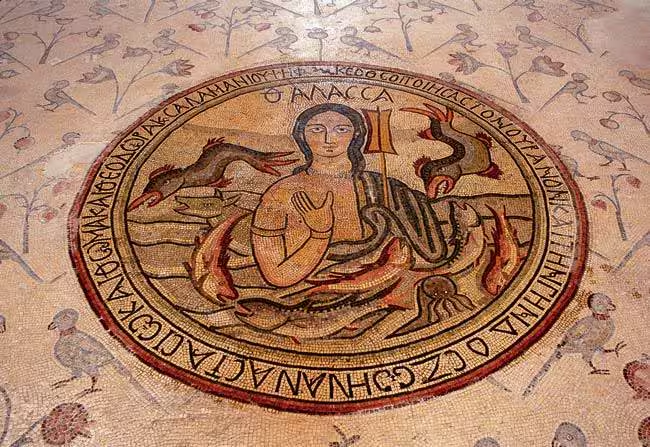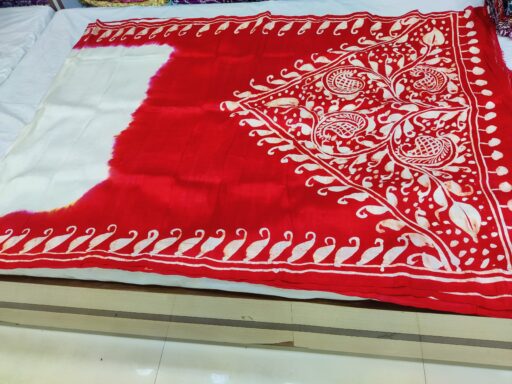Jordan’s Mosaic Art

Image: India Today
Step into a world where tiny stones tell stories that have echoed through centuries. Welcome to Jordan, a land where mosaic art is more than a craft—it’s a living, dynamic expression of history, creativity, and cultural pride. In Jordan, mosaics do more than decorate walls; they embody the spirit of a people, preserving memories and moments that transcend time.
A Legacy Carved in Stone
The art of mosaic, born from the Greek word ‘mousaikos’, has captivated civilizations for over 4,000 years. It originated in ancient Mesopotamia, where the Sumerians first experimented with this intricate technique. By the 1st to 8th centuries AD, Jordan had become a center for mosaic art, where the tradition flourished and has survived the passage of time, continuing to inspire and tell stories.
This enduring legacy is deeply rooted in the very land itself, with Jordan’s unique geology providing artists with an unparalleled palette of natural materials.
Nature’s Rich Palette
Jordan’s landscape offers a natural bounty for mosaic artists. From the deep black of basalt to the bright white of granite, and the earthy reds, yellows, and ochres in between, the land itself is a source of inspiration. Artists hand-pick stones from the earth’s diverse palette, each hue carrying its own unique character and texture. These natural materials bring depth and vibrancy to every mosaic, turning simple stones into works of art.
But how do artists transform these raw materials into intricate masterpieces? The process is as fascinating as the end result.

Crafting Beauty, One Stone at a Time
The creation of a mosaic is a labor-intensive, meticulous art. It begins with cutting natural stones into small bars, typically 1×1 cm, which are then shaped into cubes, parallelograms, or custom forms as the design requires. Artists use tweezers to carefully place each piece on a canvas, following a pre-drawn outline. This painstaking process requires not only skill but an extraordinary eye for detail and color. Every stone is thoughtfully positioned, resulting in a piece that is both beautiful and meaningful.
This level of craftsmanship has made certain cities in Jordan, particularly Madaba, renowned centers of mosaic art.
Madaba: The Heart of Mosaic Art
At the center of Jordan’s mosaic tradition lies the city of Madaba, known as the “City of Mosaics.” Home to more than 450 mosaic artisans, Madaba is a vibrant hub where ancient techniques blend with modern innovation. The city’s most famous treasure is the Madaba Mosaic Map, a 6th-century masterpiece that depicts the Holy Land, stretching from Egypt to Lebanon. This historic map is not just a piece of art—it’s a visual representation of the region’s religious and cultural significance, offering a glimpse into the past through the language of stone.
While Madaba honors its ancient traditions, a new generation of artists is ensuring that the art form remains vibrant and relevant in the modern world.
A New Generation of Artists
Today, a new wave of mosaic artists is carrying this ancient tradition forward. One of the most prominent young artists is Moath Al Anati, who began crafting mosaics at the age of 13. Trained at the renowned Madaba Institute for Mosaic Art and Restoration, Moath and his peers are reinventing the craft by blending traditional techniques with contemporary designs. Their work reflects both the heritage of Jordan and the evolving identity of a modern nation, ensuring that mosaic art remains relevant in today’s world.
This blend of tradition and innovation has cemented mosaic art’s place not just in Jordan’s cultural landscape, but in its everyday life and economy as well.
More Than Just Art
In Jordan, mosaics are more than decorative pieces—they are an integral part of the country’s culture and economy. Mosaic art graces homes in the form of wall hangings, tables, and coasters, while also being a popular choice for weddings, official events, and souvenirs. The artistry not only preserves Jordan’s cultural heritage but also provides livelihoods for countless artisans. Through this craft, communities are connected, and a sense of national pride is strengthened.
As Jordan continues to nurture and promote its mosaic tradition, the world is taking notice.
A Global Treasure
As Jordan works to have Madaba recognized as the World City of Mosaic Craft, it’s clear that this ancient art form holds universal appeal. The intricate designs, the patience required to create them, and the stories told through stone transcend borders, making mosaic art a global treasure. Each piece reflects the perseverance and creativity of the human spirit, connecting past generations with the present and future.
In a world that’s constantly changing, Jordan’s mosaic tradition endures as a reminder of the power of art to bridge history and culture. It’s not just about preserving the past—it’s about shaping a future where the beauty of ancient craftsmanship continues to inspire and unite people across time and place. Through the enduring art of mosaic, Jordan invites the world to step into its rich tapestry of history, creativity, and cultural pride, one tiny stone at a time.
Bidisha Ghosh, Staff Reporter









